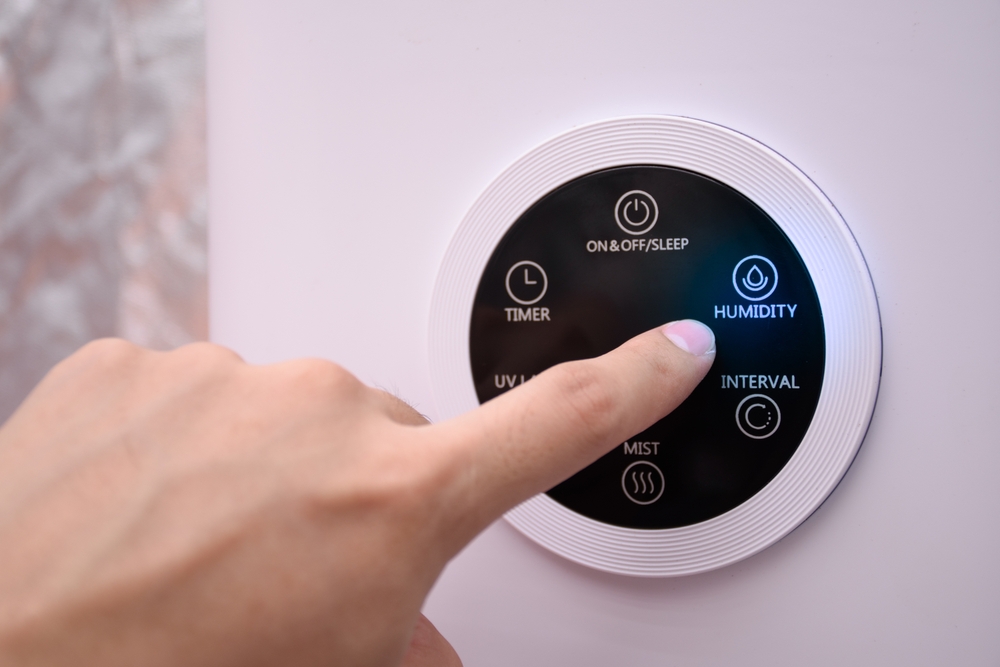
Humidity Hacks: Keeping Your Home Comfortable (and Dry) All Summer Long in Woodbine, KS
August 25, 2025 9:07 pm Leave your thoughtsSummer in Woodbine, Kansas brings with it an unmistakable blend of sunshine and stifling humidity. The air grows heavy, condensation appears on windows, and your home can start to feel more like a swamp than a sanctuary. If you’re living in the heart of the Midwest, you know that battling humidity in your home is as much a summer ritual as barbecues and fireworks. Excess humidity can not only make you uncomfortable, but it can also invite mold, mildew, and pests, while compromising your home’s air quality and structure. Fortunately, there are effective strategies to manage indoor moisture and reclaim your comfort without cranking the AC endlessly. In this guide, we’ll explore how to lower humidity in your home and maintain a fresher, drier, and healthier environment throughout the sticky summer months.
What Humidity Does to Your Home
Humidity refers to the amount of water vapor present in the air. In the summer, especially in Woodbine where temperatures climb and rainfall is frequent, the warm air can hold a lot more moisture. When this humid air enters your home, it can affect everything from the structural integrity of your house to your personal comfort. High humidity makes the air feel warmer than it actually is, which in turn pushes you to rely more heavily on your cooling system. This drives up energy bills and puts unnecessary strain on your HVAC unit.
The impact of humidity in your home goes beyond discomfort. It can lead to damp walls, peeling paint, musty odors, and warped wood. Even worse, excess moisture provides a breeding ground for mold and mildew, which can cause or aggravate respiratory issues. Homes with high humidity also attract pests like silverfish, cockroaches, and termites. All these issues can culminate in a diminished home value, expensive repairs, and potential health risks for your family.
Identifying the signs of high humidity early is essential. You might notice persistent condensation on windows, a clammy feeling on furniture or bedding, or increased allergy symptoms. Using a hygrometer—a simple and inexpensive device—can help you measure the relative humidity levels in your house. Ideally, indoor humidity should be kept between 30% and 50%. Anything above 60% signals a moisture problem that needs to be addressed.
Sources of Humidity in Your Home
To effectively manage indoor humidity, you must first understand where it comes from. In Woodbine, your home’s design, habits, and environmental exposure all play a role. Summer storms and a humid climate can naturally elevate moisture levels in the air, but everyday activities also contribute. Cooking, showering, washing clothes, and even breathing release water vapor into your home’s air.
Poor insulation and ventilation are also major culprits. Basements and crawlspaces, common in Kansas homes, tend to be naturally damp and can leak moisture into living spaces. Inadequate sealing around windows and doors allows humid outdoor air to seep inside. Even houseplants and aquariums can increase moisture levels.
Air conditioning units, while useful for cooling, aren’t always sufficient on their own. Some older or improperly maintained systems may not efficiently remove humidity from the air. Without a proper plan, relying solely on your AC can actually result in cool but still damp indoor conditions. It’s important to pair cooling with moisture management strategies that address the root causes.
How to Lower Humidity in Your Home Naturally and Effectively
Luckily, there are several proven ways to control humidity in your home—some simple and affordable, others more comprehensive but worth the investment. A layered approach works best, combining ventilation, dehumidification, and habit adjustments to tackle moisture at the source.
Start by ventilating effectively. Install exhaust fans in high-moisture areas like the kitchen, bathroom, and laundry room. Make sure these fans vent to the outside—not just into the attic. Keep them running during and after high-humidity activities. If possible, open windows during less humid times of day to allow fresh air to circulate and stale, moist air to escape.
Next, consider using a dedicated dehumidifier. Portable units can be moved from room to room, while whole-home systems integrate with your HVAC for seamless, efficient moisture control. In humid zones like Woodbine, a dehumidifier can be a game-changer, especially during July and August when heat and humidity peak. These systems work by pulling excess moisture from the air, collecting it in a reservoir or draining it automatically.
Seal leaks and improve insulation throughout your home. Use caulk and weather stripping to close gaps around doors, windows, and vents. Make sure your attic, crawlspace, and basement are properly insulated and ventilated to prevent trapped moisture. Vapor barriers can be installed in crawlspaces to block moisture from seeping upward.
Even small habit changes can make a difference. Use lids when cooking, take shorter showers with cooler water, hang laundry outside to dry when possible, and move houseplants to well-ventilated areas. Investing in moisture-absorbing materials like silica gel packs or desiccants can help manage humidity in small enclosed spaces like closets and pantries.
Long-Term Solutions: Systems and Structural Upgrades
While short-term fixes can provide relief, long-term control of humidity in your home may require a more strategic investment. In a humid place like Woodbine, it’s worth evaluating your home’s infrastructure to create a permanently comfortable environment.
Upgrading your HVAC system can be a significant but rewarding step. Modern air conditioners and heat pumps often come with built-in humidity control features that adjust cooling output based on moisture levels. Some systems even include variable-speed fans that run longer and more efficiently, removing more humidity in the process. Adding a smart thermostat can further improve efficiency by learning your habits and adjusting humidity settings automatically.
Another upgrade to consider is encapsulating your crawlspace. This involves sealing the ground and walls with a heavy-duty vapor barrier and installing a dehumidifier to regulate moisture. It’s especially beneficial for older homes in Kansas with exposed dirt basements or poorly ventilated crawlspaces. Encapsulation keeps moisture out, improves air quality, and enhances energy efficiency.
Attic ventilation is also crucial. Properly vented attics prevent heat and moisture buildup, which can otherwise seep into your living space and cause mold or wood rot. Ridge vents, soffit vents, and attic fans work together to create airflow and reduce humidity levels above your ceiling.
Installing energy-efficient windows with low-E coatings can help by reducing condensation and preventing outside humidity from entering. Likewise, upgrading to moisture-resistant materials in bathrooms and kitchens—such as mold-resistant drywall or vinyl flooring—adds another layer of protection.
Summer in Woodbine Doesn’t Have to Be Sticky
Living in Woodbine, KS means embracing the beauty of the Midwest—rolling prairies, warm summer nights, and yes, the inevitable humidity. But with the right knowledge and tools, you can prevent the muggy air outside from invading your home. By understanding how to lower humidity in your home, you not only make your space more comfortable, but you also protect it from long-term damage, reduce energy costs, and improve your family’s health.
The key is a combination of vigilance and action. Use ventilation to fight daily moisture, rely on dehumidifiers for heavy lifting, and consider structural upgrades that deliver long-term benefits. Monitor your home’s humidity levels regularly and stay proactive about addressing any signs of trouble. Over time, these efforts pay off in the form of a cooler, cleaner, and drier living environment.
So this summer, while the Kansas skies rumble and the air hangs thick, take control of the conditions inside your home. With these humidity hacks, your home in Woodbine will remain a refuge of comfort, even as the sun blazes and the humidity soars.
Need HVAC Services in Woodbine, KS?
Family- and locally owned and operated since 1996, we have built a reputation for delivering excellent workmanship, dependability, and professionalism to the residents and commercial businesses in the Woodbine and surrounding areas. Our team of highly skilled and knowledgeable technicians specializes in air conditioning and heating system installation, repair, and replacement; boiler and furnace maintenance; and mini-split and general HVAC system care. All of our technicians are fully licensed, bonded, and insured. Contact us today to learn more about what we can do for you!
Categorised in: Indoor Air Quality, TIPS
This post was written by admin
